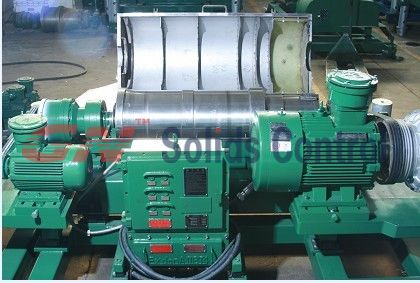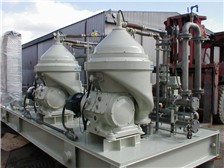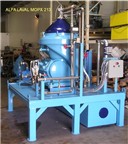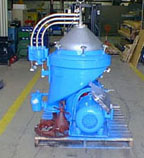Doris Leblond
OGJ Correspondent
PARIS, Oct. 7 -- Over the last 18 months, natural gas prices have continued to rise steadily in both established and new markets "not only a reflection of higher demand, but also of a delayed supply response," said Nabuo Tanaka, executive director of Paris-based International Energy Agency, in his introduction of the 2008 Natural Gas Market Review.
"Investments uncertainties, cost increases, and delays continue to be a major problem in most gas markets and are continuing to constitute a threat to long-term security of supply," Tanaka stressed. These factors no doubt will be compounded by the world financial turmoil, which has erupted since the review was published and which will forcibly result in a credit squeeze for energy investments.
Investment lag
Ian Cronshaw, head of IEA's Energy Diversification Division, who designed and managed the review, was already concerned that increasing gas demand, especially for power generation, was not being met by sufficient investment. While he said projects currently under way will proceed, he also said the lag in LNG investments beyond 2012 "is a concern for all gas users in both the IEA and non-IEA markets."
The review pointed out other issues that pose a threat to long-term supply security: the escalation of engineering, procurement, and construction costs (EPC); the tight engineering market; and the growing propensity of producing countries to reserve a greater share of gas production for their own growing domestic markets.
High natural gas prices, which also are pushing up electricity prices because of the close link being established between gas and power, have not slowed demand in consuming markets either inside the IEA or nonmember countries. In the US gas demand grew by 6.5% in 2007 and about 4% in first-quarter 2008. In Japan, growth in 2007-08 was 9% on the back of a 50% lower nuclear power utilization.
In Europe, gas consumption was dampened by warm weather but in early 2008, growth jumped to more than 8%, most notably in Spain, where first-half 2008 demand increased by 20% despite an economic slowdown.
Meeting gas demand
To meet this growing demand LNG trade is on the way to playing a stronger role in regional markets within the Organization for Economic Cooperation and Development (OECD) countries in the short and medium term, forecasts the review. While LNG is already pivotal in OECD Pacific, it is expected to reach 20% in Europe, where imports will account for over half of total supplies.
In North America, indigenous production will still supply more than 90% of expected demand by 2015, yet LNG imports are expected to more than double 2007 levels.
Increasing LNG trade will globalize regional gas markets, a trend that seems irreversible, says the review. Driving global interactions are the prevalence of more producing and consuming countries, a growing dependence on external markets in OECD Europe, tighter balances, increasing volumes of spot and short-term LNG, and higher gas prices.
But, insists the review, to benefit from the globalization of the gas market, improved transparency on flows and prices and more-competitive internal markets are needed. Interregional competition will improve global gas security in the long term. Making its point, the review notes that liquidity on European hubs—both on the UK's National Balancing Points and on most continental hubs—has "grown considerably, promoting more flexible market responses, more transparency, and more-accurate price signals."
Gas traded among regions will grow to 17% in 2015 from 13% in 2005, with LNG accounting for about 84% of the increase in interregional trade as exports grow to some 400 billion cu m in 2015 from 192 billion cu m in 2005.
Gas supply sufficient
Examining gas supply, IEA's review sees worldwide gas resources more than sufficient to meet global demand, which it establishes at 3.689 trillion cu m by 2015, up from 2.854 trillion cu m in 2005, always subject to timely investment. The biggest regional increase in absolute terms is in the Middle East, but there is also a marked increase in Africa and Latin America. All told, production is expected to increase in all major regions except OECD Europe, where North Sea output is declining. North American production growth should slow after 2015.
Natural gas supplies will continue to come mainly from conventional sources but coalbed methane and other nonconventional supplies, such as shale gas, should be playing a growing role in some regions, notably North America.
The great uncertainty, however, is how major resource holders will meet increasing demand, rapidly rising costs, and development of more-remote gas.
Pipeline delays
Looking at the needed infrastructure to deal with increasing gas flows, both regional and global, Tanaka was concerned that "progress on major pipelines, outside the United States is slow." Improvements to market functioning are especially urgent in Europe, he noted, because of the region's growing demand for gas. Also needed in Europe are greater cross-border gasline connections.
Noted, also, were the many delays in pipeline infrastructure development last year globally as well as increased costs. Particularly mentioned were Nabucco and Nord Stream in Europe and the Alaska pipeline in North America.
In LNG there are similar trends, as many projects are planned but not all are going ahead. In this area, the review notes the unprecedented and major expansion in regasification capacity worldwide, which risks being underutilized for it greatly exceeds liquefaction capacity. On the other hand, concedes the review, this could be a source of flexibility.
The review is prolific and detailed on all these developments. It also includes data and forecasts on OECD and non-OECD regions to 2015 and in-depth reviews of five OECD countries and regions, including the European Union.
Source: Oil & Gas Journal
High natural gas prices, which also are pushing up electricity prices because of the close link being established between gas and power, have not slowed demand in consuming markets either inside the IEA or nonmember countries. In the US gas demand grew by 6.5% in 2007 and about 4% in first-quarter 2008. In Japan, growth in 2007-08 was 9% on the back of a 50% lower nuclear power utilization.
In Europe, gas consumption was dampened by warm weather but in early 2008, growth jumped to more than 8%, most notably in Spain, where first-half 2008 demand increased by 20% despite an economic slowdown.
Meeting gas demand
To meet this growing demand LNG trade is on the way to playing a stronger role in regional markets within the Organization for Economic Cooperation and Development (OECD) countries in the short and medium term, forecasts the review. While LNG is already pivotal in OECD Pacific, it is expected to reach 20% in Europe, where imports will account for over half of total supplies.
In North America, indigenous production will still supply more than 90% of expected demand by 2015, yet LNG imports are expected to more than double 2007 levels.
Increasing LNG trade will globalize regional gas markets, a trend that seems irreversible, says the review. Driving global interactions are the prevalence of more producing and consuming countries, a growing dependence on external markets in OECD Europe, tighter balances, increasing volumes of spot and short-term LNG, and higher gas prices.
But, insists the review, to benefit from the globalization of the gas market, improved transparency on flows and prices and more-competitive internal markets are needed. Interregional competition will improve global gas security in the long term. Making its point, the review notes that liquidity on European hubs—both on the UK's National Balancing Points and on most continental hubs—has "grown considerably, promoting more flexible market responses, more transparency, and more-accurate price signals."
Gas traded among regions will grow to 17% in 2015 from 13% in 2005, with LNG accounting for about 84% of the increase in interregional trade as exports grow to some 400 billion cu m in 2015 from 192 billion cu m in 2005.
Gas supply sufficient
Examining gas supply, IEA's review sees worldwide gas resources more than sufficient to meet global demand, which it establishes at 3.689 trillion cu m by 2015, up from 2.854 trillion cu m in 2005, always subject to timely investment. The biggest regional increase in absolute terms is in the Middle East, but there is also a marked increase in Africa and Latin America. All told, production is expected to increase in all major regions except OECD Europe, where North Sea output is declining. North American production growth should slow after 2015.
Natural gas supplies will continue to come mainly from conventional sources but coalbed methane and other nonconventional supplies, such as shale gas, should be playing a growing role in some regions, notably North America.
The great uncertainty, however, is how major resource holders will meet increasing demand, rapidly rising costs, and development of more-remote gas.
Pipeline delays
Looking at the needed infrastructure to deal with increasing gas flows, both regional and global, Tanaka was concerned that "progress on major pipelines, outside the United States is slow." Improvements to market functioning are especially urgent in Europe, he noted, because of the region's growing demand for gas. Also needed in Europe are greater cross-border gasline connections.
Noted, also, were the many delays in pipeline infrastructure development last year globally as well as increased costs. Particularly mentioned were Nabucco and Nord Stream in Europe and the Alaska pipeline in North America.
In LNG there are similar trends, as many projects are planned but not all are going ahead. In this area, the review notes the unprecedented and major expansion in regasification capacity worldwide, which risks being underutilized for it greatly exceeds liquefaction capacity. On the other hand, concedes the review, this could be a source of flexibility.
The review is prolific and detailed on all these developments. It also includes data and forecasts on OECD and non-OECD regions to 2015 and in-depth reviews of five OECD countries and regions, including the European Union.
Source: Oil & Gas Journal












